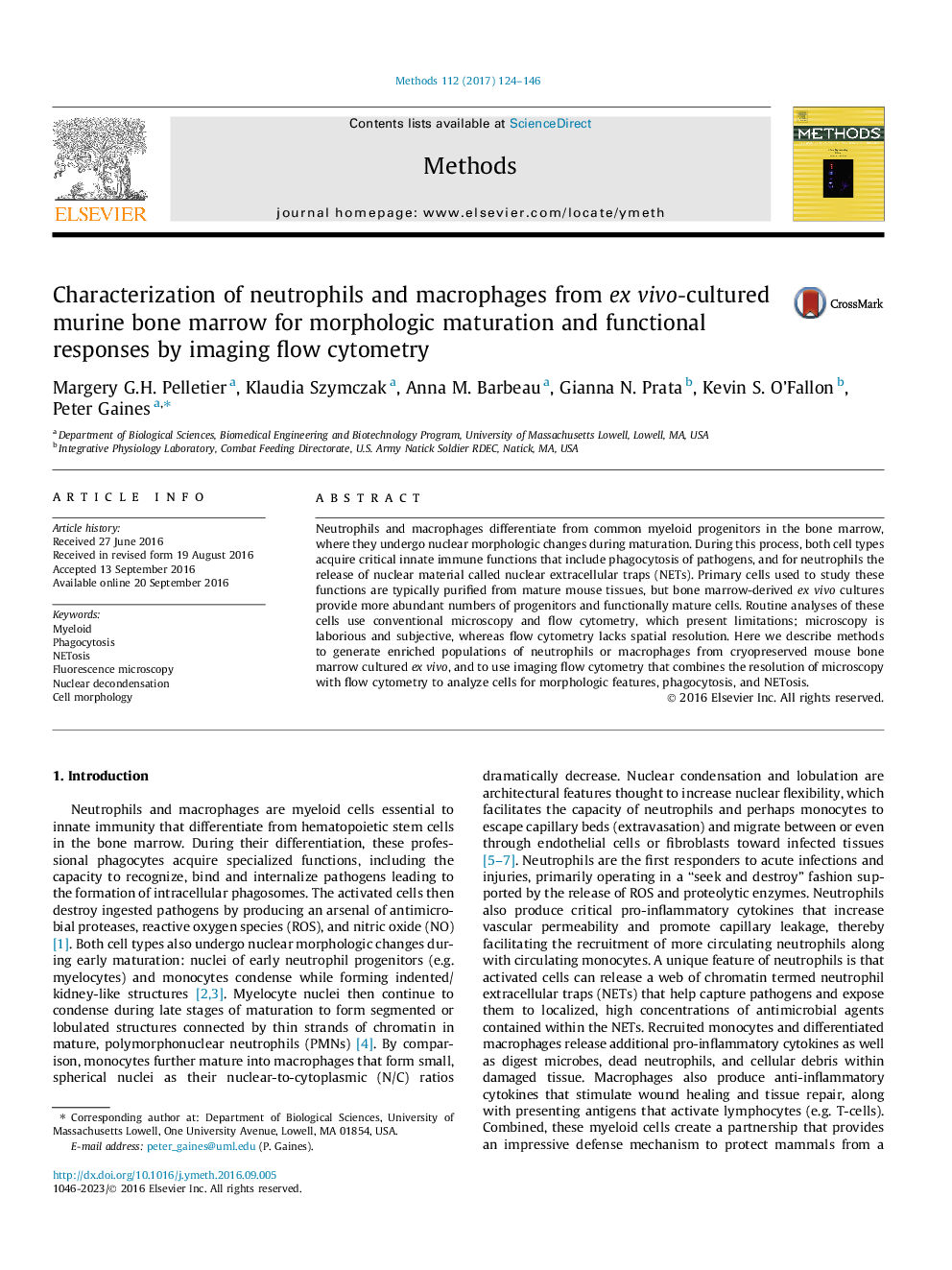| کد مقاله | کد نشریه | سال انتشار | مقاله انگلیسی | نسخه تمام متن |
|---|---|---|---|---|
| 5513540 | 1541214 | 2017 | 23 صفحه PDF | دانلود رایگان |
- Ex vivo culture of cryopreserved mouse hematopoietic stem cells is described.
- Imaging flow cytometry identifies nuclear-to-cytoplasmic ratios in myeloid cells.
- Phagocytosis and phagocytic indices from neutrophils or macrophages are quantified.
- Quantitative assessments of NETosis are determined for stimulated neutrophils.
- Neutrophils stimulated with E. coli exhibit features of phagocytosis and NETosis.
Neutrophils and macrophages differentiate from common myeloid progenitors in the bone marrow, where they undergo nuclear morphologic changes during maturation. During this process, both cell types acquire critical innate immune functions that include phagocytosis of pathogens, and for neutrophils the release of nuclear material called nuclear extracellular traps (NETs). Primary cells used to study these functions are typically purified from mature mouse tissues, but bone marrow-derived ex vivo cultures provide more abundant numbers of progenitors and functionally mature cells. Routine analyses of these cells use conventional microscopy and flow cytometry, which present limitations; microscopy is laborious and subjective, whereas flow cytometry lacks spatial resolution. Here we describe methods to generate enriched populations of neutrophils or macrophages from cryopreserved mouse bone marrow cultured ex vivo, and to use imaging flow cytometry that combines the resolution of microscopy with flow cytometry to analyze cells for morphologic features, phagocytosis, and NETosis.
Journal: Methods - Volume 112, 1 January 2017, Pages 124-146
